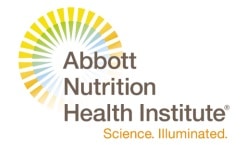The healthcare landscape has entered a period of rapid change not seen in many years. There is now an intense focus on both quality and cost, driving dramatic changes in the healthcare model in the U.S. Collectively, these quality and cost drivers are known as “pay-for-performance” models of care.Value-based purchasing, bundled payments, and accountable care organizations are key examples of pay-for-performance models that promote this new healthcare dynamic. These pay-for-performance models are designed to reward behavior, promote coordination, and impose costs if quality goals are not met.
While initially focused on the acute care hospital, these pay-for-performance models are being embraced in outpatient settings, including long-term care providers and physician groups. Underpinning this new healthcare paradigm is the ability to use new web-based technologies to allow for transparency of care and electronic documentation, which in turn allow for use of analytic tools (data mining) to assess the impact of pay-for-performance at the population level.
Along with the development of these new incentives, there have been dramatic changes in physician practice patterns. A key change has been the explosive growth in the use of hospitalists – physicians who typically provide hospital-based care only.
There are now over 44,000 hospitalists and they provide care for over 70% of hospitalized Medicare patients. There is also a growing number of physicians who are now employed and this shift away fromself-employment will likely continue.
These two fundamental changes in physician practices create a large and growing base of physicians whose services may be more strongly aligned with pay -forperformance models.
Unfortunately, while malnutrition has been recognized as a key prognostic factor of the outcomes of both chronic and acute diseases, nutrition is rarely represented in quality incentives in pay -forperformance-models, especially in the immediate post-hospital setting.Furthermore, there are now many more transitions of care than in the past, resulting in increased care fragmentation. Transitions of care are widely regarded as high-risk points for care breakdowns and this includes an appropriate nutrition hand-off from inpatient to outpatient setting. This situation is exacerbated by a lack of documentation of malnutrition in the hospital setting. Few physicians are trained to appropriately capture malnutrition as a diagnosis in the hospital setting.
Additionally, malnutrition continues to be a challengein the post-hospital setting.
There is a profound disconnect between the nutrition science that supports the need to markedly improve care (both identification, early intervention, and ongoing intervention) of malnourished hospitalized patients and the recently developed pay-for-performance models which do not have nutrition-related incentives and costs.
In this rapidly evolving healthcare landscape, quality goals need to be developed that include the identification and early treatment of malnutrition to address malnutrition. Where possible, these goals should emphasize outcomes. Quality goals can be systematically effective if developed through national policy changes. Education must be offered on platforms utilized by key providers – targeting groups that are more aligned with incentives, such as hospitalists. Tailored quality improvement projects focusing on nutrition need to be developed and be supported by a mentor base that can help projects succeed.
Electronic medical records and data mining can be leveraged to assess and track both the intervention and outcome results. While there has been an under-appreciation of nutrition-related issues in the healthcare system, the rapid changes in the U.S. healthcare model provide an opportunity to effectively address this critical problem.
The rapidly evolving healthcare landscape presents the optimal opportunity to address malnutrition across the care continuum. Certainly, healthcare leaders have made some headway in defining malnutrition, organizing education and awareness programs, and promoting multidisciplinary involvement. In fact, an example of a successful nutrition intervention is illustrated in medical nutrition
therapy for diabetes.
Despite efforts to bring attention to nutrition in healthcare, there is still much room for improvement. Malnutrition continues to be globally prevalent and may be attributed to the lack of a
consensus definition for malnutrition, incentives for physicians, nutrition protocols for nurses, nutrition education for physicians and clinicians, standardized nutrition policies, adherence to nutrition interventions, and follow-up care on nutrition. Domains for further improvement have been identified as follows:
1. Published evidence from large clinical trials that illustrates the impact of nutrition improving patient outcomes and reducing healthcare costs
2. Educational modules about nutrition for healthcare providers, patients, and the families of patients
3. Standardized policies for malnutrition screening upon hospital admission
4. Appropriate validation of criteria for malnutrition diagnosis
5. Standardized policies for nutrition therapy that are outcome-focused and promote continuity of nutrition care
6. Incentives for healthcare providers to incorporate nutrition in standard care procedures
7. Evaluations of adherence to nutrition therapy guidelines by both caregivers and patients and the efficacy of these guidelines
As demonstrated by leaders from a variety of healthcare fields, the importance of nutrition across the entire care continuum is undeniable. This issue has gained momentum, but only the widespread implementation of standardized nutrition policies will allow for the eradication of nutrition-based healthcare deficits.


















